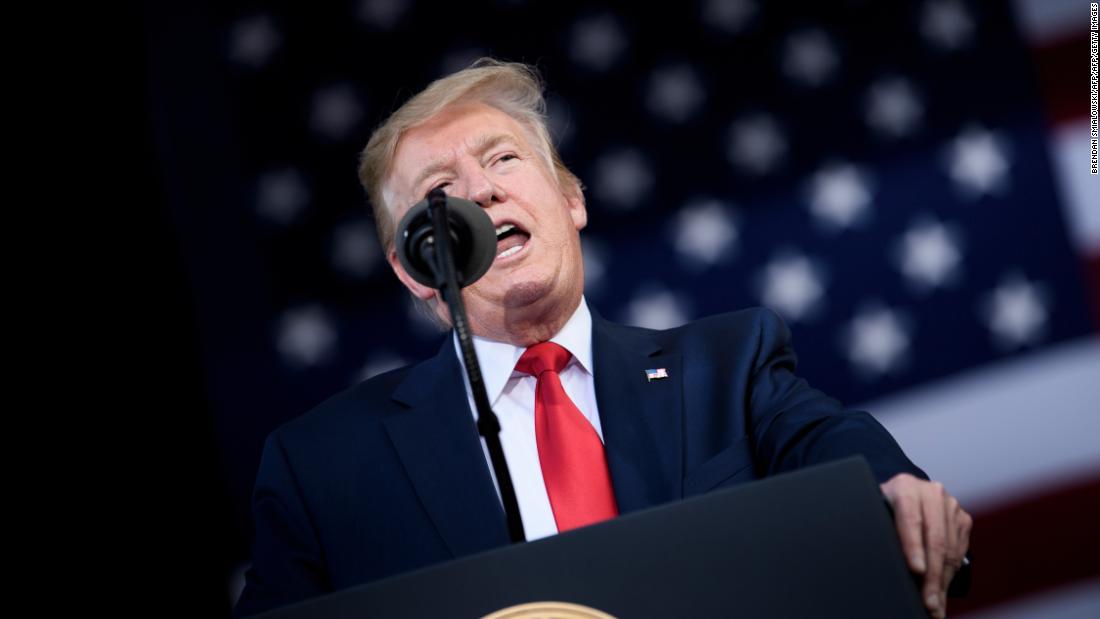
Among his "greatest hits," Trump also repeated several false claims he's made in the past.
First, the President claimed that Puerto Rico had received $91 billion after being hit by hurricanes Irma and Maria in 2017, adding that was the highest amount ever given to "anybody" for disaster relief.
Facts first: This is false. Not only has Puerto Rico not received $91 billion, even if it had that figure would still fall below the amount of federal money allocated to recovery efforts following Hurricane Katrina. In addition, Trump has opposed efforts in Congress to increase disaster relief funding, in part because some of the money would go to Puerto Rico.
So far, roughly $42 billion in federal disaster relief funding has been allocated to Puerto Rico. Only about a quarter of that ($12 billion) has actually been spent.
The $91 billion Trump cites is based on estimated future spending. As administration officials told the Washington Post, the additional $50 billion comes from an "internal Office of Management and Budget estimate of the potential liabilities over the life of the disaster that would need to be committed under the Robert T. Stafford Disaster Relief and Emergency Assistance Act of 1988."
In other words, the $91 billion is simply an estimate of what FEMA would have to spend to rebuild Puerto Rico, not what's been allocated. This all comes as Congress battles over $17 billion in additional disaster fund relief, which includes funds for Puerto Rico.
In remarks Thursday afternoon, Trump repeated his $91 billion claims, again stating that Puerto Rico has gotten more money than it actually has.
The theoretical $91 billion is still less than the $114.5 billion the federal government spent on recovery efforts after Hurricane Katrina hit the Gulf Coast in 2005, causing an estimated $160 billion in economic damage.
During his rally, the President also made two false statements about the immigration process, suggesting that asylum seekers need only state that they are fearful of returning to their country in order to obtain asylum and stay in the US, and that countries get to decide who enters the US visa lottery system.
Facts first: Seeking asylum is far more difficult than the President has routinely suggested.
While discussing "loopholes" in US immigration law, Trump criticized the asylum process, suggesting how easily it could be gamed. "Asylum. They walk in, they read a statement by a lawyer. ... 'I am very fearful of (sic) my life, my country is a very frightening place to be. Please help me.'"
The asylum process is an arduous one. Candidates must submit an application explaining why they are seeking asylum, go through a background check -- which screens for criminal history -- and demonstrate a "credible fear" for returning to their home country.
Government data shows that almost 140,000 affirmative asylum applications were received in 2017. Of this number, only 26,568 people were granted asylum.
In a move to tighten the process, the Department of Homeland Security is working to have front line Border Patrol agents assess migrants' initial claims for refuge, an aggressive step pushed by White House adviser Stephen Miller that could make the asylum claim process more difficult for migrants.
At the rally on Wednesday, Trump also claimed that other countries decide who is placed in the US Diversity Visa program.
"So these countries put people in a basket," he told the audience, referencing the Diversity Visa program, asserting that "If the United States is accepting people courtesy of a lottery system. If they're accepting people under a lottery system do you actually think the country is giving us their finest?"
Facts first: Trump's suggestion that "countries put people in a basket" is incorrect. Applicants for the US Diversity Visa program apply through the US State Department.
"It's not true at all," said Julia Gelatt, a senior policy analyst at the Migration Policy Institute. "Individuals apply through the State Department."
Applicants who meet the basic requirements can apply through the US State Department. (Certain criminal records can make individuals ineligible for application.) If selected, they will then have to apply for the diversity visa green card and go through the same background checks as other green card applicants.
The program is designed to increase the diversity of immigration to the US from countries that most immigrants to the US don't come from. But countries are not in charge of selecting who applies.
No comments:
Post a Comment